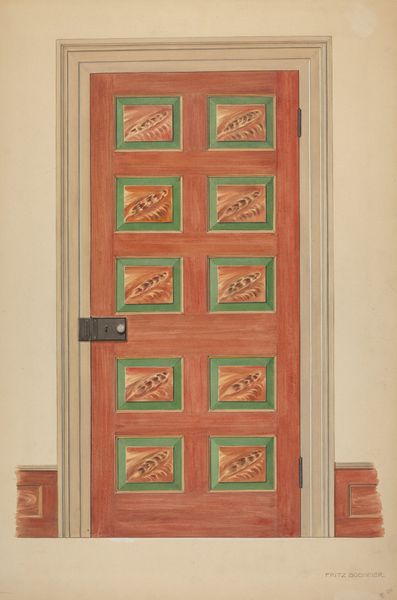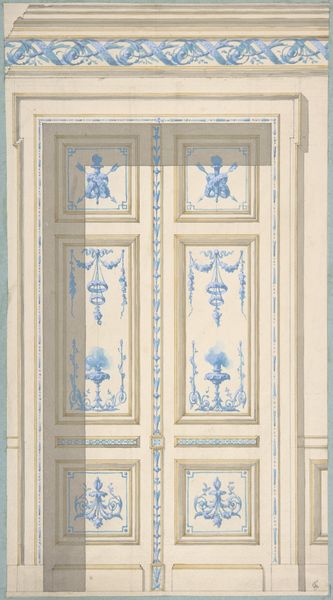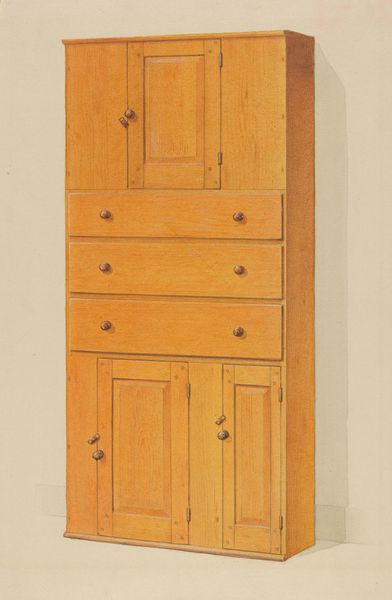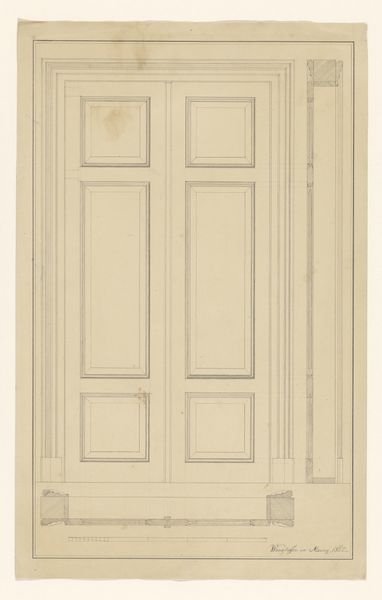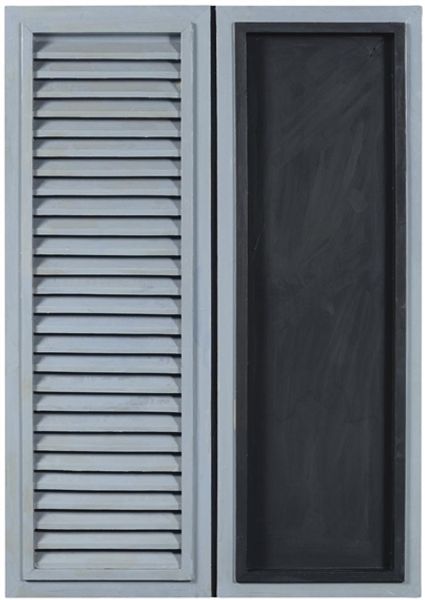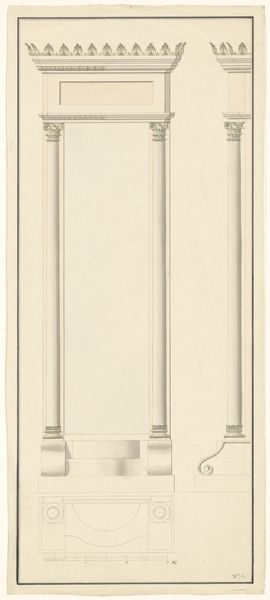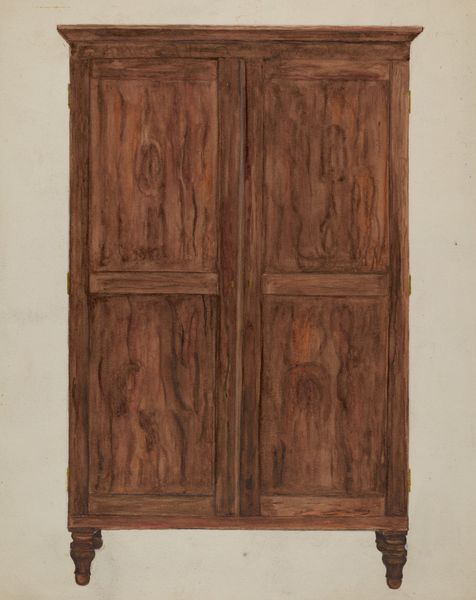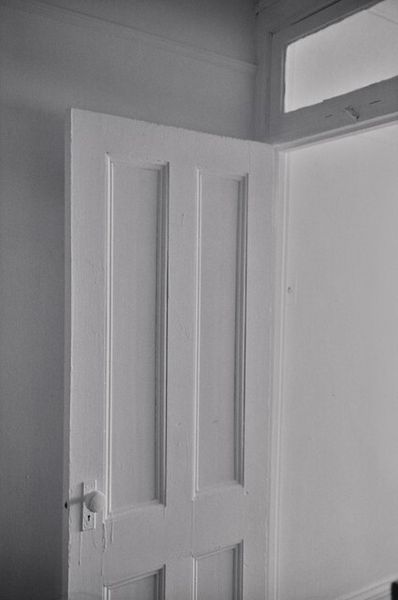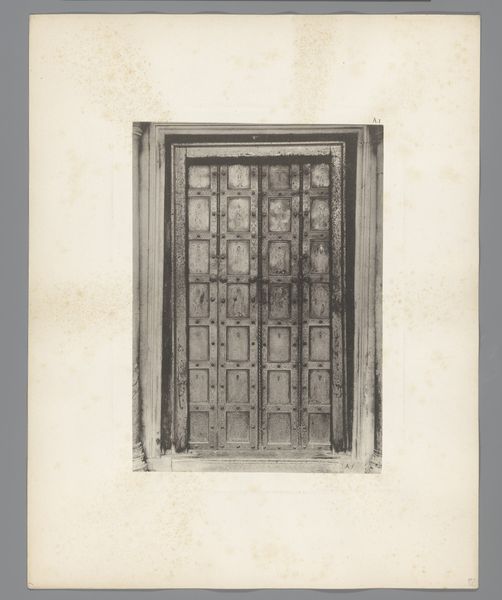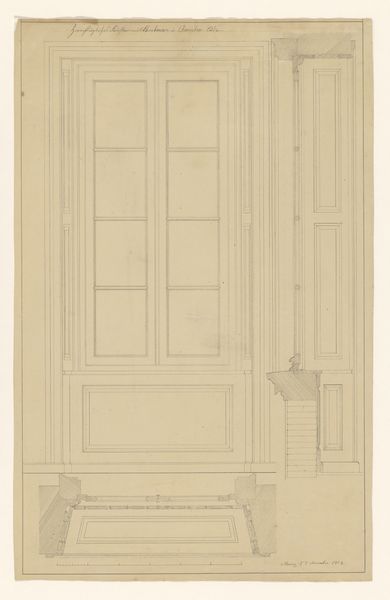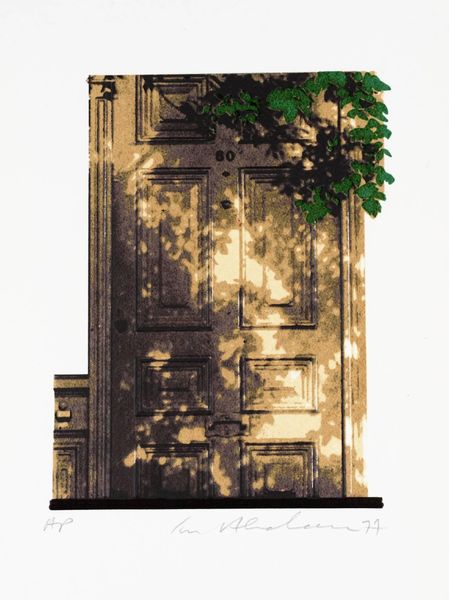
drawing, tempera, painting, architecture
#
drawing
#
tempera
#
painting
#
sculpture
#
muted tone
#
architecture
#
historical building
Dimensions: overall: 66.2 x 45.4 cm (26 1/16 x 17 7/8 in.) Original IAD Object: 81 1/2" high; 37 1/2" wide
Copyright: National Gallery of Art: CC0 1.0
Fritz Boehmer made this watercolor and graphite drawing, called "Zoar Door," some time in the first half of the 20th century. It's a rendering of a door in the Zoar Village State Memorial in Ohio. Boehmer was part of a wave of American artists who, in the early 20th century, depicted historical sites, artifacts, and design. This interest in America's past coincided with industrialization. The development of cities and factories led to a sense of nostalgia for what many saw as a simpler, more authentic time. Boehmer wasn't alone in this feeling. The Index of American Design, a program under the Works Progress Administration during the Great Depression, employed artists to record objects of material culture that seemed at risk of disappearing. The Zoar Community was founded in 1817 by German religious separatists seeking refuge in America. In its aesthetics, the Zoar community cultivated a sense of modesty and functionalism in its designs. It's a fascinating history that demands further investigation using sources like historical documents, photographs, and other visual and material culture of the period.
Comments
No comments
Be the first to comment and join the conversation on the ultimate creative platform.
